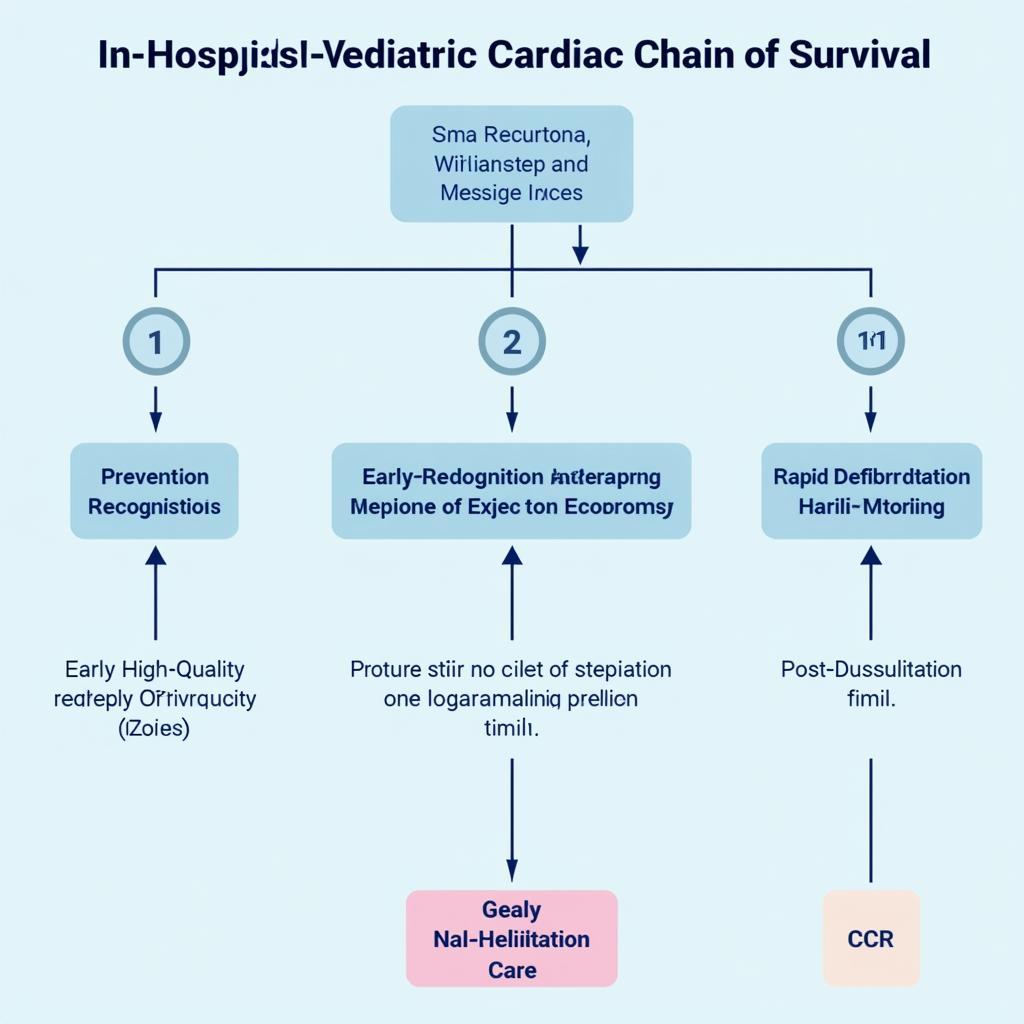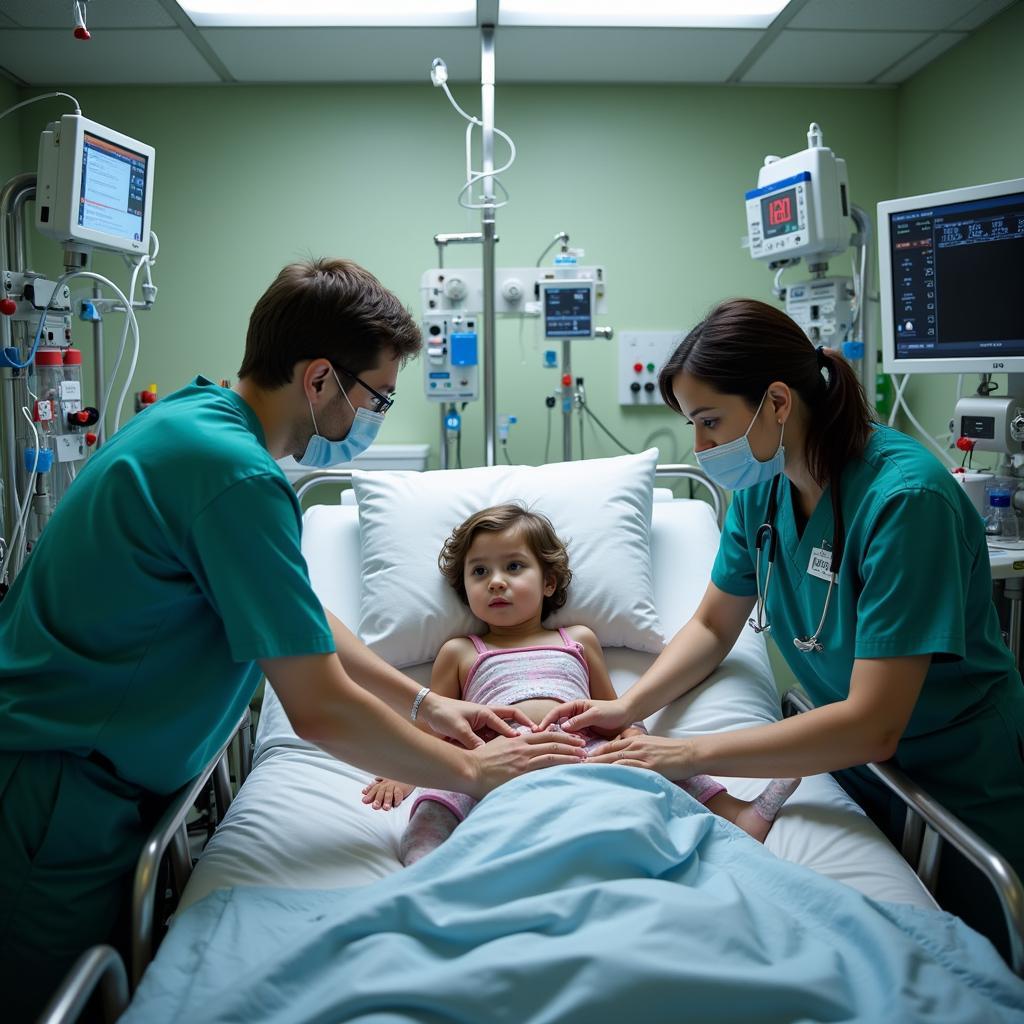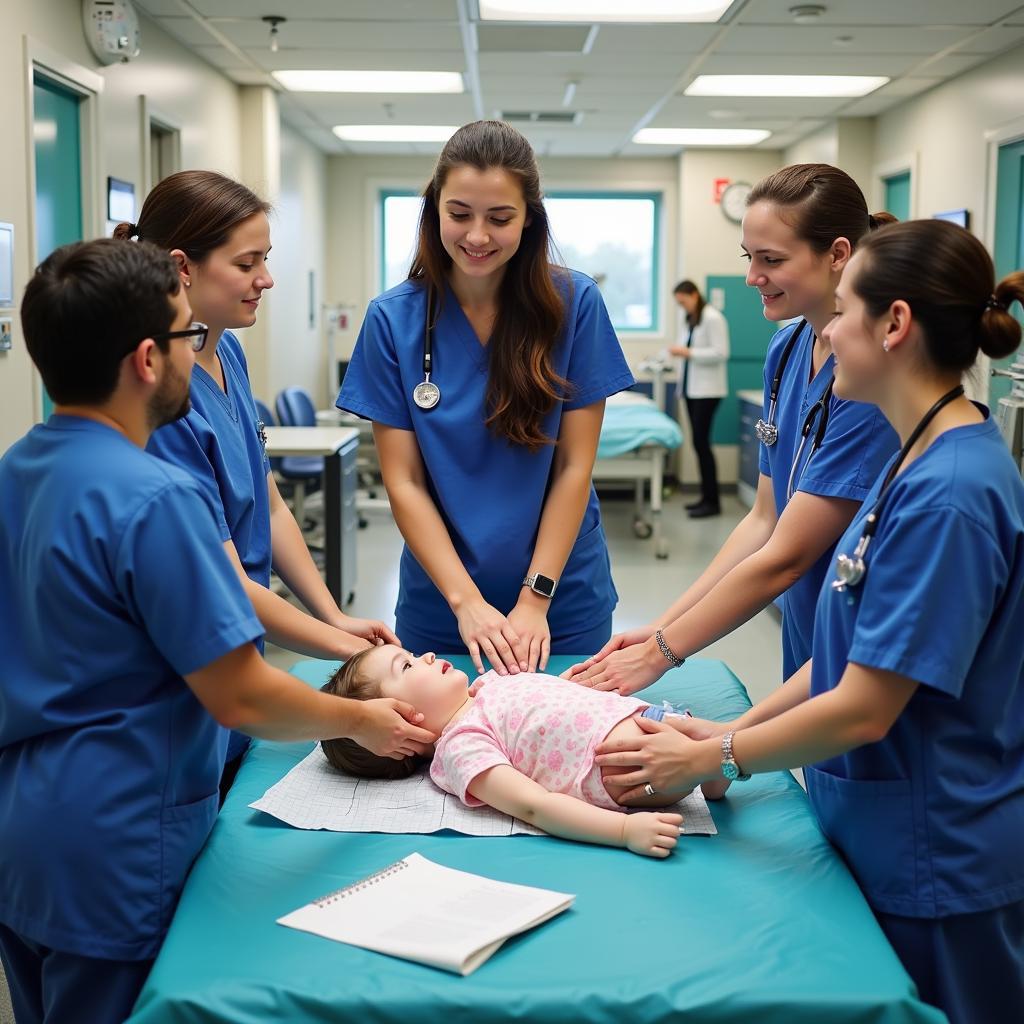The in-hospital pediatric cardiac chain of survival is a series of actions that, when performed effectively, increase the chances of survival for a child experiencing cardiac arrest within a hospital setting. This process emphasizes the importance of early recognition, rapid response, and coordinated teamwork.
Understanding and implementing the in-hospital pediatric cardiac chain of survival is crucial for any healthcare professional working with children. This article will delve into the essential steps, highlighting their significance and offering practical insights to improve outcomes. Learn more about the in hospital chain of survival.
Why is the In-Hospital Pediatric Cardiac Chain of Survival Important?
Cardiac arrest in children is a time-sensitive emergency. Every second counts, and delays in treatment can significantly impact the child’s chances of survival and long-term neurological outcomes. The in-hospital pediatric cardiac chain of survival provides a structured framework for immediate and effective intervention.
The Core Components of the In-Hospital Pediatric Cardiac Chain of Survival
The in-hospital pediatric cardiac chain of survival comprises several key elements:
- Prevention: Identifying and addressing potential risk factors, such as underlying medical conditions or medication side effects, can help prevent cardiac arrest.
- Early Recognition and Activation of the Emergency Response System: This involves recognizing the signs of cardiac arrest in a child, including loss of consciousness, absence of breathing, and lack of pulse. Immediately activating the hospital’s emergency response system (often by calling a designated code) is critical.
- Early High-Quality CPR: Prompt initiation of high-quality CPR is essential to maintain circulation and oxygen delivery to vital organs. This includes proper chest compressions and rescue breaths.
- Rapid Defibrillation: If the cardiac arrest is due to a shockable rhythm (ventricular fibrillation or pulseless ventricular tachycardia), rapid defibrillation is crucial to restore a normal heart rhythm.
- Post-Resuscitation Care: After successful resuscitation, the focus shifts to stabilizing the child and providing comprehensive post-resuscitation care, which may involve intensive care and ongoing monitoring.
 In-Hospital Pediatric Cardiac Chain of Survival Diagram
In-Hospital Pediatric Cardiac Chain of Survival Diagram
Optimizing the In-Hospital Pediatric Cardiac Chain of Survival
Effective implementation of the in-hospital pediatric cardiac chain of survival requires a multidisciplinary approach:
- Regular Training and Simulation: Regular training and mock code simulations are crucial to ensure that all healthcare professionals are proficient in the necessary skills and can perform effectively under pressure.
- Age-Specific Equipment and Protocols: Having age-appropriate equipment and protocols readily available is essential for effective resuscitation.
- Teamwork and Communication: Clear communication and effective teamwork are paramount during a pediatric cardiac arrest. Designated roles and responsibilities help ensure a coordinated and efficient response. You can find more information about related topics on our page on pediatric out of hospital chain.
What are the Signs of Cardiac Arrest in a Child?
Recognizing the signs of cardiac arrest quickly is paramount. These include:
- Unresponsiveness
- Absence of breathing or only gasping breaths
- No pulse
Addressing Specific Challenges in Pediatric Resuscitation
Pediatric resuscitation presents unique challenges:
- Variability in Size and Physiology: Children vary significantly in size and physiology, requiring adjustments in CPR techniques and defibrillation energy levels based on age and weight.
- Emotional Impact on Healthcare Providers: Caring for a critically ill child can be emotionally challenging for healthcare providers. Support systems and debriefings after critical events are important.
“In pediatric cardiac arrest, speed and precision are crucial. Having age-specific protocols and readily available equipment can be the difference between life and death,” says Dr. Emily Carter, Pediatric Cardiologist at San Jose Hospital.
The Importance of Post-Resuscitation Care
Successful resuscitation is only the first step. Comprehensive post-resuscitation care is critical for optimizing the child’s long-term outcome. This may involve managing airway and breathing, supporting circulation, and addressing any underlying medical conditions. Learn more about our hospital services at al ain hospital.
 Post-Resuscitation Care in Pediatric ICU
Post-Resuscitation Care in Pediatric ICU
“Post-resuscitation care is just as critical as the initial resuscitation efforts. Ongoing monitoring and supportive care are essential to ensure the best possible outcome for the child,” adds Dr. David Miller, Pediatric Intensivist at San Jose Hospital. For more detailed information on adult cardiac care, visit our page on the in hospital adult cardiac chain of survival.
Conclusion
The in-hospital pediatric cardiac chain of survival is a critical framework for improving outcomes in children experiencing cardiac arrest. By adhering to these principles and prioritizing prevention, early recognition, rapid response, and high-quality post-resuscitation care, healthcare professionals can significantly enhance a child’s chance of survival and long-term well-being. Learn more about pediatric out-of-hospital care through our resource on pediatric out-of-hospital chain of survival 6 steps.
 Medical Team Training for Pediatric Emergency
Medical Team Training for Pediatric Emergency
When support is needed, please contact Phone Number: 02437655121, Email: [email protected] Or visit the address: No. 298 Cau Dien Street, Minh Khai, Bac Tu Liem, Hanoi, Vietnam. We have a 24/7 customer care team.